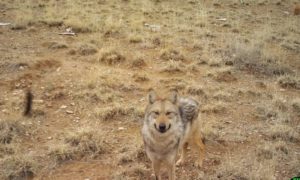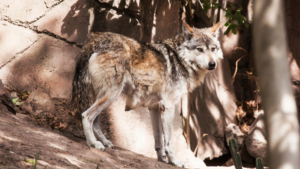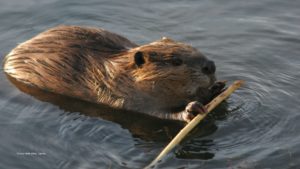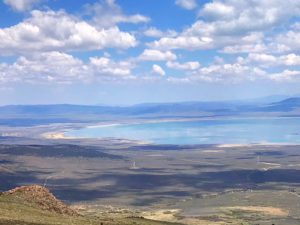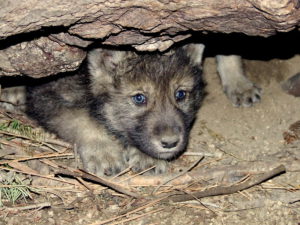Overview of the Burnt Creek Allotment
The Burnt Creek allotment encompasses 4,884 acres of BLM land, entirely within the Burnt Creek WSA save for a road. The allotment is located in the Upper Pahsimeroi valley in central Idaho, and contains important habitat for numerous wildlife species. Part of Idaho’s Sagebrush Sea, the allotment contains extensive sagebrush habitat utilized by sage-grouse and other sage-grouse obligate species; and there are several sage-grouse leks (strutting and breeding grounds) within the area, including one about a mile from the allotment. Nearly the entire allotment, 4,800 acres, is bighorn sheep winter range, with 625 acres of elk winter range. Elk have knocked over fences to access Burnt Creek and its riparian area.
Bull trout, a species protected as threatened under the Endangered Species Act, spawn in the portion of Burnt Creek within the allotment. Burnt Creek is also historic habitat for threatened Chinook salmon and steelhead trout, and is designated critical habitat for those species.
Past and current livestock grazing on the Burnt Creek allotment have degraded and altered the characteristics and quality of its natural resources, including Burnt Creek and its tributaries and springs. Livestock grazing is harmful to sage-grouse populations and habitat in many direct, indirect, and cumulative ways. Livestock grazing causes long-term changes in plant communities; reduces habitat components such as grasses that sage-grouse need; and degrades the riparian habitats essential for sage-grouse survival and reproduction. Livestock grazing is also harmful to bull trout populations because livestock can directly step on redds (nests), remove riparian vegetation, destabilize stream banks, widen stream channels, reduce pool frequency, increase soil erosion, and degrade water quality.
Due to these impacts, in an attempt to protect the mainstem creek from direct livestock disturbance, a fenced exclosure surrounds much of the creek. The fence was initiated in 1985 and has been expanded multiple times. However, livestock repeatedly trespass inside of the exclosure and are also periodically permitted to cross the creek within the exclosure. In addition, several tributaries and springs that contribute flows to Burnt Creek are not excluded from livestock. The fencing serves to intensify and concentrate livestock use in these remaining unfenced areas. The fencing also serves as a major barrier to recreation, since much of it is electric fencing with a one-foot gap at the bottom, forcing recreationalists to perform a belly-crawl under the electrified wires.
Nature of the action
This action challenges a Bureau of Land Management (“BLM”) grazing decision and associated environmental analysis on the Burnt Creek allotment, which has been subject to previous litigation in Western Watersheds Project v. Snyder
The challenged grazing decision reissued a ten-year livestock grazing permit for the Burnt Creek allotment, which is within a Wilderness Study Area (“WSA”) and comprises almost 5,000 acres of important habitat for sage-grouse, bull trout, and many other species. Livestock grazing has degraded this habitat and other resource values, yet BLM has refused to meaningfully modify grazing to address these degraded conditions. Instead, BLM has reauthorized status quo grazing and additional “range projects” for livestock, contrary to multiple provisions in its governing land use plan as well as governing direction on Wilderness Study Areas, and has refused to take a “hard look” at the environmental consequences of its actions.
Plaintiff Western Watersheds Project thus challenges the Burnt Creek allotment final decision, environmental assessment, and finding of no significant impact as violating the Federal Land Policy and Management Act (“FLPMA”), and its implementing regulations; the governing Challis Resource Management Plan; BLM’s own “Interim Management Policy and Guidelines for Lands Under Wilderness Review”; and the National Environmental Policy Act (“NEPA”), and its implementing regulations.

